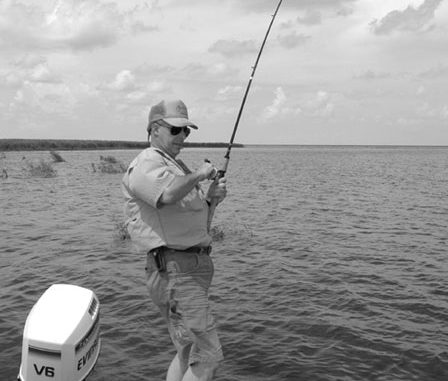
Dear Capt. Paul:
I hope you can help me. I have seen references to Bayou Sue on several fishing reports. It is in the Biloxi Marsh area. It was referred to near the Lake Eugene area, which I think is Lake Eugenie.
Thanks, Ned
Capt. Paul’s response:
Without seeing the specific posting on Lake Eugene (Eugenie), I would be reluctant to try to pinpoint a position for that location. I can say that Lake Eugenie is between Lawson Bay and Stump Lagoon, north of Bayou LaLoutre.
Several bayous join the lake. Bayou Biloxi enters Lake Eugenie on the north side at a position of or about N29 56.280 x W89 26.653. Crooked Bayou meets Lake Eugenie on the east side at or about N29 54.935 x W89 26.625. Bayou Muscle meets Lake Eugenie on its western side at or about N29 54.742 x W89 24.363.
The mouth of Bayou Sue (Hasouse) at Lake Borgne is located about 1,000 yards north of the mouth of Bayou St. Malo (St. Malo at Lake Borgne is at or about N29 53.127 x W89 35.548. Bayou Hasouse snakes in the Biloxi Marsh between Bayou Magnolia and Blind Bayou on the eastern side of Lake Borgne.
The position for the mouth of Bayou Hasouse at Lake Borgne is at or about N29 53.688 x W89 35.423. There is also a new washout of the Lake Borgne shoreline that now opens into Bayou Hasouse just north of the original mouth of the bayou. It is about 400 yards to the north, and is at or about N29 53.871 x W89 35.451.
Unless otherwise specified, all positions are stated as H,DDD,MM.mmm and were determined using WGS 84 datum. All headings, bearings and courses are stated in magnetic degrees.
Dear Capt. Paul:
I’ve heard they will possibly be removing (if they haven’t already done so) the rig structures on the north shore of Lake Pontchartrain out of Bayou Lacombe.
Would you happen to have the coordinates for these structures or the shell pads where they were?
Mike W.
Capt. Paul’s response:
Yes I do!
I found several wells that are and were located south of the Bayou Lacombe area in Lake Pontchartrain in the Big Point Gas Field.
I found these on the Louisiana Department of Natural Resources Data Base and Mapping for Oil and Gas wells in the state. The site named SONRIS can be accessed from the DNR web site or directly by typing the following URL in the address bar of your browser: http://sonris-www.dnr.state.la.us/www_root/sonris_portal_1.htm
Select the “SONRIS GIS Access” button at the bottom of the page, and then zoom in on the state map until you get to the St. Tammany shoreline near Bayou Lacombe.
Be sure to check the boxes by the Oil and Gas Wells, Oil and Gas Bottom Holes and Bores, and Oil and Gas Fields for GIS data. This will ensure that you get the data that you are seeking. After making your selections, be sure to Refresh the map by clicking on the button so named at the top of the page.
Once on the portion of the map covering the area you need, select from the toolbar the “i” tool that is inside a circle and block. Then using the “i” pointer, place it on one of the GIS symbols and click. The serial number of the rig will appear along with a button located on the extreme right side of the field marked “well details.”
By clicking on that link, all of the data will appear in a data table. You will note that the position is stated in latitude and longitude in DDD,MM,SS.ss, and was determined using NAD 27 datum.
Some of the other data on the well is stated in a DDD.ddddddddd format. Either do the conversion yourself, or change the position of location format in your GPS to reflect the same position format used in the SONRIS mapping. Remember to do the same with the datum.
Some of the sites are now only a shell bed on the seabed, as the actual well platform has been removed.
Unless otherwise specified, all positions are stated as H,DDD,MM.mmm and were determined using NAD 27 DATUM. All headings/bearings/courses are stated in magnetic degrees.
Dear Capt. Paul:
I have a Garmin Chartplotter with an external antenna. I cut the BNC connector off (I know I should not have done that) so I could run the wire inside my tubing.
I have replaced it three times with a different type of BNC connector, but after three or four uses it comes up “antenna shorted.”
I am looking for someone more capable than I to replace it correctly. Do you know of anyone you can recommend?
Thank you, Johnny
Capt. Paul’s response:
Almost any competent TV repair or electronic shop technician should be able to assist you in the BNC replacement. The job has to be done correctly as the antenna is an active antenna. By that I mean that the GPS receiver sends an electric current to the antenna to energize the antenna field. This allows the antenna to receive more faint signals and generally improves signal reception.
If your technician still is not able to avoid the “short,” contact the Garmin Tech Support section for assistance. There will probably be a charge for the repair, but at least you know it will be done correctly.


